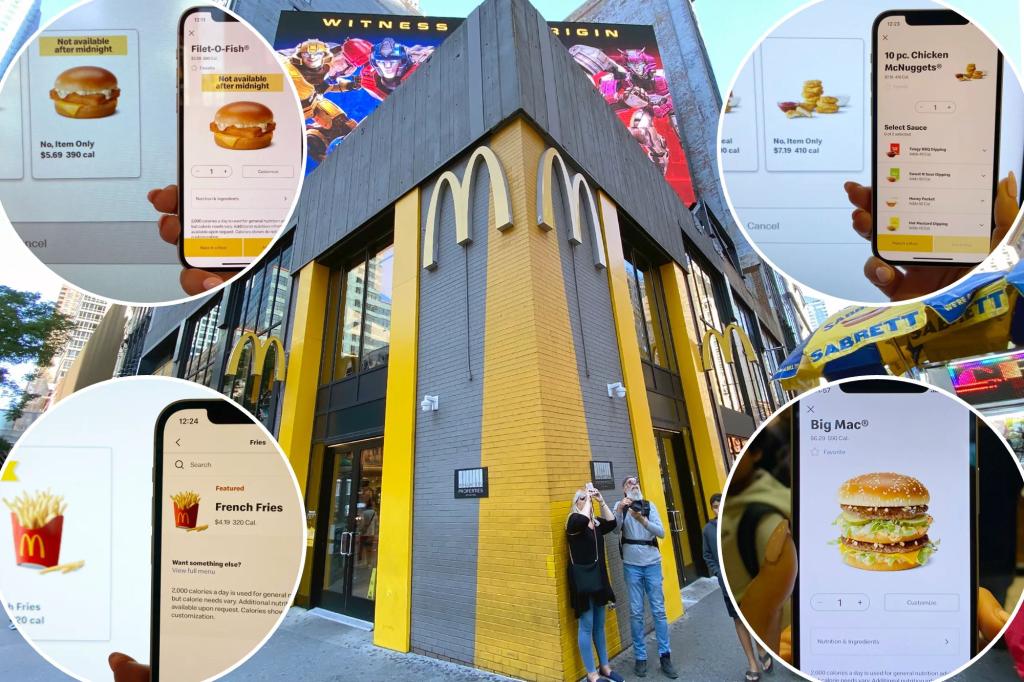Customers have been increasingly complaining about pricing discrepancies at McDonald’s, with some customers noting that prices are higher when ordering through the app compared to in-store. This issue gained attention when a man went viral on TikTok for pointing out the price differences between ordering a breakfast sandwich through the app versus in-person. Other users also shared similar experiences of being upcharged on the official McDonald’s mobile app. To test these claims, The Post compared prices at three Midtown locations both in person and on the app.
The prices at all three fast-food restaurants were found to be the same as those listed on the app, with slight variations between locations. However, prices did differ slightly per store. For example, the store on 6th Ave between 46th and 47th sold a Big Mac for $6.29, while the store on 7th Ave and 45th offered it for $5.99. Prices for items like Fish-O-Filet, McNuggets, and fries also varied slightly at each location. Customers have been shocked to learn that prices can vary from store to store, but this is a common practice for franchises, according to McDonald’s USA president Joe Erlinger.
Despite the price discrepancies, ordering through the McDonald’s app is typically cheaper due to the deals and promotions offered. The average price of a Big Mac in the U.S. has risen from $4.39 in 2019 to $5.29. Prices in Midtown Manhattan are slightly higher than the national average, but ordering through the app can offer deeper discounts and promotions. Free mobile ordering apps provided by big brands like McDonald’s help in the fight against inflation, providing customers with deals like $5 for 20 Chicken McNuggets, which can cost almost twice as much at the counter.
These deals not only save customers money but also provide valuable information to businesses through tracking. By using the app, companies can gather data on individual preferences and tailor offerings to match what customers are looking for. This can help improve customer experience and increase loyalty. However, low-income customers making less than $45,000 per year have been driven away from McDonald’s in recent years due to inflation, with many opting to eat at home due to the cost of fast food being considered a luxury.
McDonald’s price increases last year exceeded the industrywide average of 7.6%, according to restaurant research firm Technomic, but Erlinger stated that prices for many menu items have risen less than the rate of inflation and remain competitive with other quick-service restaurants. Despite the complaints about pricing discrepancies, ordering through the McDonald’s app can provide customers with cost savings through deals and promotions. In the face of inflation, mobile apps offered by fast-food chains are becoming a valuable tool to attract customers and provide them with discounts and rewards, ultimately benefiting both customers and businesses.


